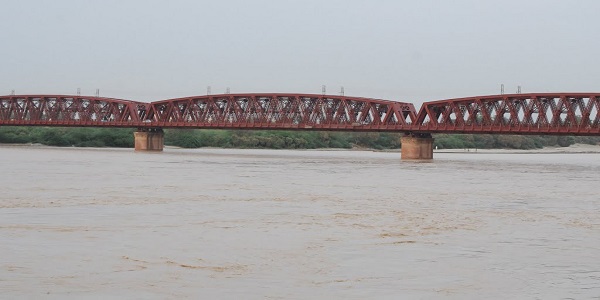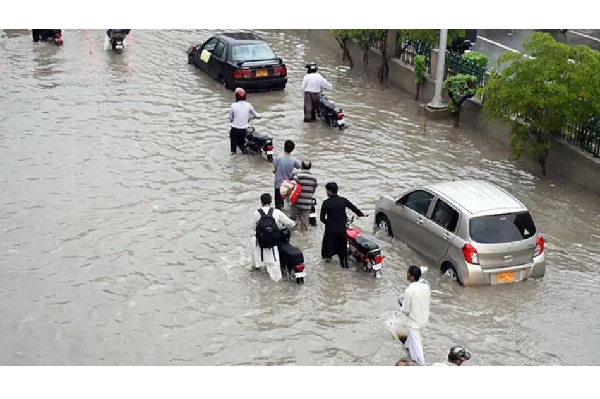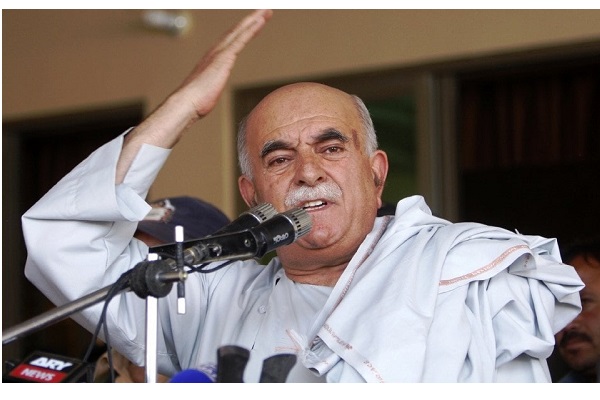ISLAMABAD: The National Disaster Management Authority (NDMA) issued a nationwide alert on Friday, cautioning against severe
HYDERABAD: After reaching state of high flood level on Friday evening, Kotri Barrage is bracing for peak of high flood before the flow is to be released for Indus delta downstream.
The barrage started showing a rising trend at 6pm upstream discharge. Flows of above 70,000 cusec had been received at the barrage over the last 24 hours. By 6pm Thursday (Sept 1), the flow was measured at 437,947 cusecs and 24 hours later it was recorded at 508,102 cusecs upstream.
The peak would continue till Saturday morning before starting to record a fall, say officials.
“We will be receiving peak of high flood which was passed by Sukkur Barrage on Aug 25,” said Kotri Barrage chief engineer over phone. He appeared confident that the river dykes in his territorial jurisdiction were ‘safe’ and strong enough to withstand the flows.
Insofar as the current peak of 558,218 cusecs passed at Guddu Barrage at 12 noon on Friday, “this will be received at the [Kotri] barrage after a gap of at least a week given time-lag of water travel between three barrages”.
Sukkur Barrage had passed first high flood peak of 579,753 cusecs on August 25 at 6am. Two days earlier (at 6pm on Aug 23), Guddu Barrage had passed a peak of 576,075. “Difference of a couple of thousands of cusecs is due to incessant rains on August 23 and Aug 24 in the area that led to changes in flows,” said Abdul Aziz Soomro, in charge Sukkur barrage control room.
Kotri barrage has a designed discharge capacity of 875,000 cusecs. On Aug 27, 2010 the barrage had successfully passed a peak of 939,442 cusecs during super floods 2010 which breached Tori dyke upstream Guddu barrage on Aug 7 in that year. It had led to large scale displacement of people and left a trail of destruction in right bank districts.
After Kotri barrage passed the peak on Aug 27, 2010, another massive breach occurred at Kot Almo dyke of river in Sujawal same day, inundating large swatches of lands in Sujawal and causing migration of people in areas like Darro.
River discharges at Kotri barrage would keep rising until the peak is passed safely. “Besides recording gauges at [Kotri] barrage we note gauge level at Dadu-Moro bridge as well which delays water arrival,” said Kotri Barrage Chief Engineer Haji Khan Jamali.
Flows released from Manchhar Lake to keep it in safer limits were becoming part of overall flows in Indus river. The lake’s flows were measured at around 10,000 to 15,000 cusecs. “Now river Indus is not accepting huge flows as it is already having very heavy flows. Earlier, a flow of 30,000 cusecs was being easily released from the lake,” said irrigation officer Mahesh Kumar from Manchhar Lake.
The lake is receiving discharges from the Main Nara Valley Drain (MNVD) which is known as Right Bank Outfall Drain (RBOD-I). Breaches had been reported in MNVD, which had received hill torrents and caused breaches in the Flood Protective (FP) bund at multiple locations.
Kotri Barrage, according to CE Jamali, has a 106-mile-long left bank and 111-mile-long right bank dykes. “On the right side of river bank, Kalri Baghar (KB) feeder serves as a common bank for river and the feeder,” he said.
Following heavy rains that triggered urban flooding in Hyderabad district and ravaged rural parts of lower Sindh region, rumours kept churning out that Hyderabad and Latifabad would drown due to upcoming floods in Indus River.
“We are expecting major amounts of floodwater flowing into the barrage this evening. It will maintain rising trend for next few days,” confirmed the CE. He believed a peak of around 500,000 to 550,000 cusecs downstream would pass through the barrage downstream in next few days.
As far as Guddu and Sukkur barrages were concerned, both would be passing a flow of close to 600,000 cusecs over the next 36-48 hours. “The peak that passed earlier at two barrages barrage in the last week of August had flows of waters from hill torrents of Dera Ghazi Khan and flows of Indus, Kabul and Chenab rivers,” said Khalid Idris Rana, the director operations of the Indus River System Authority (Irsa).
He said it was purely Indus flows that were crossing Sindh’s three barrages. “Now there are no backflows upstream Guddu which is having 558,218 cusces flows today (Friday),” he said. Guddu would record a fall after 24-36 hours and then this declining trend would be seen at Sukkur Barrage after 24 hours, he added.
“The gradients in Sindh are slow and that’s why water flows are reaching a bit slowly,” Rana said. At this point of time, he said, there was no forecast of a heavy spell of rain.
Taunsa Barrage upstream Guddu had already passed its peak of 622,095 cusecs on Aug 30 at 6am and since then it continued to record a declining trend. At 6pm on Sept 2, Taunsa barrage recorded a flow of 348,208 cusecs upstream and downstream which is almost half the flow it had passed on Aug 30.
You May Also Like
LAHORE: PMLN Punjab President Rana Sanaullah Friday announced that the party Quaid Muhammad Nawaz Sharif was set to reassume
QUETTA: The arrest warrant for Mahmood Khan Achakzai, head of the Pakhtunkhwa Milli Awami Party (PkMAP) and opposition alliance,






